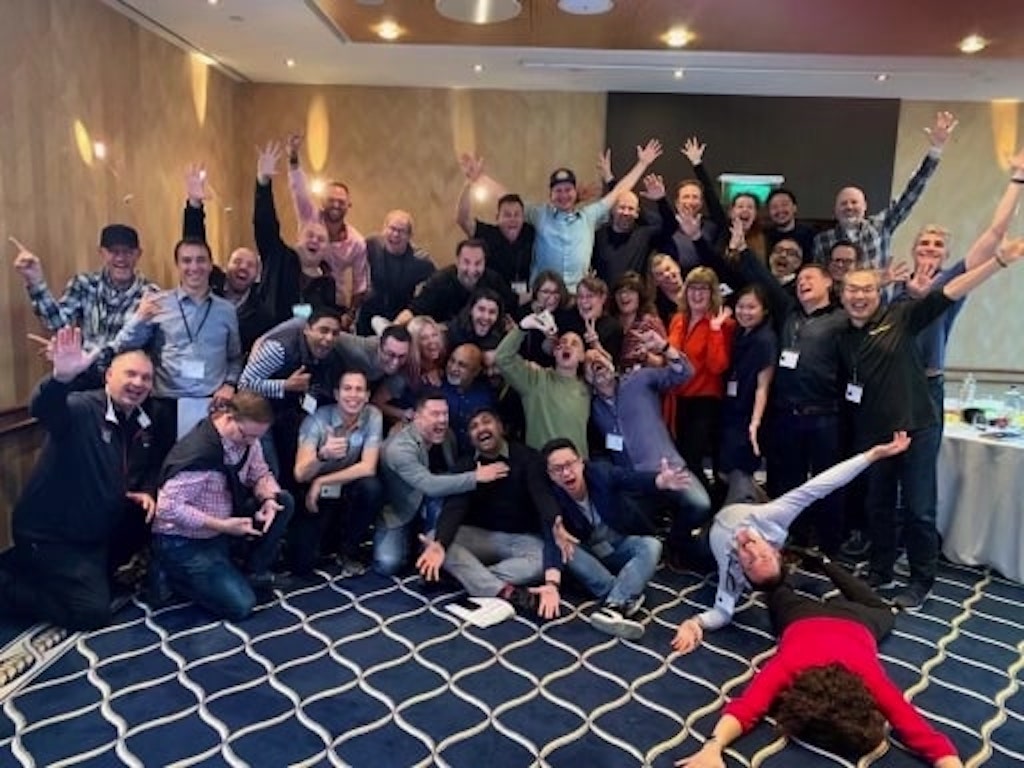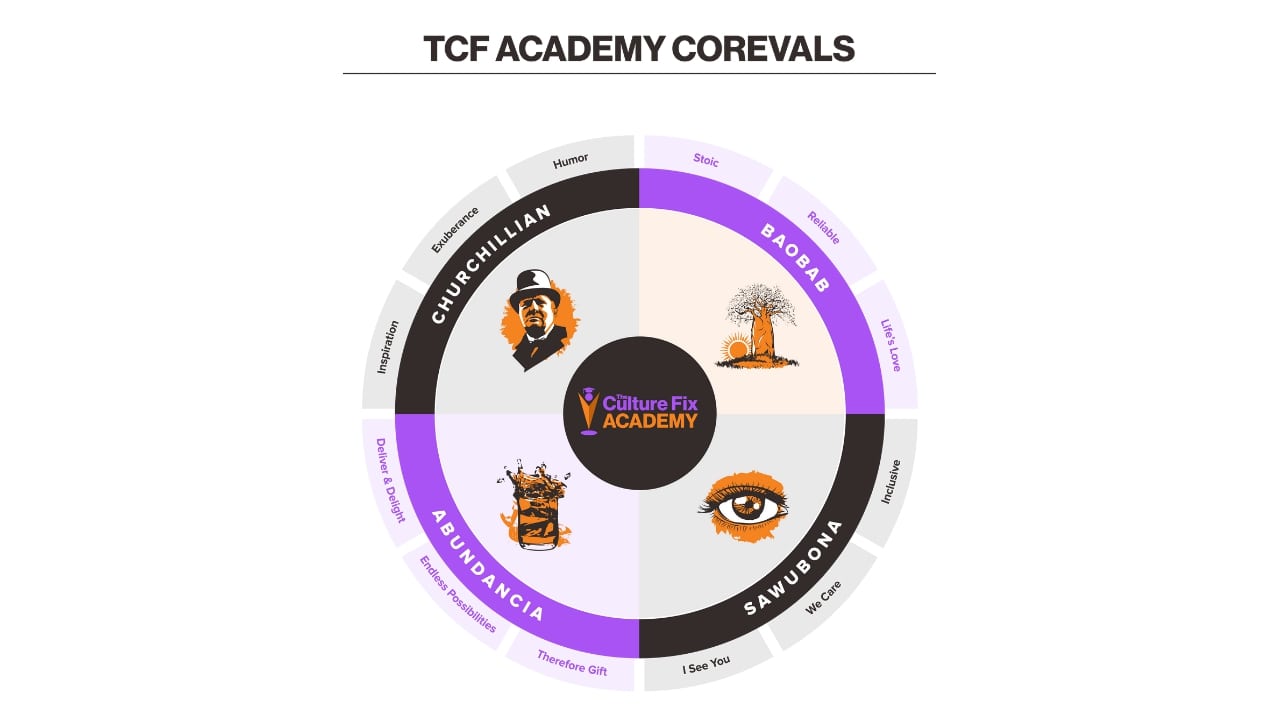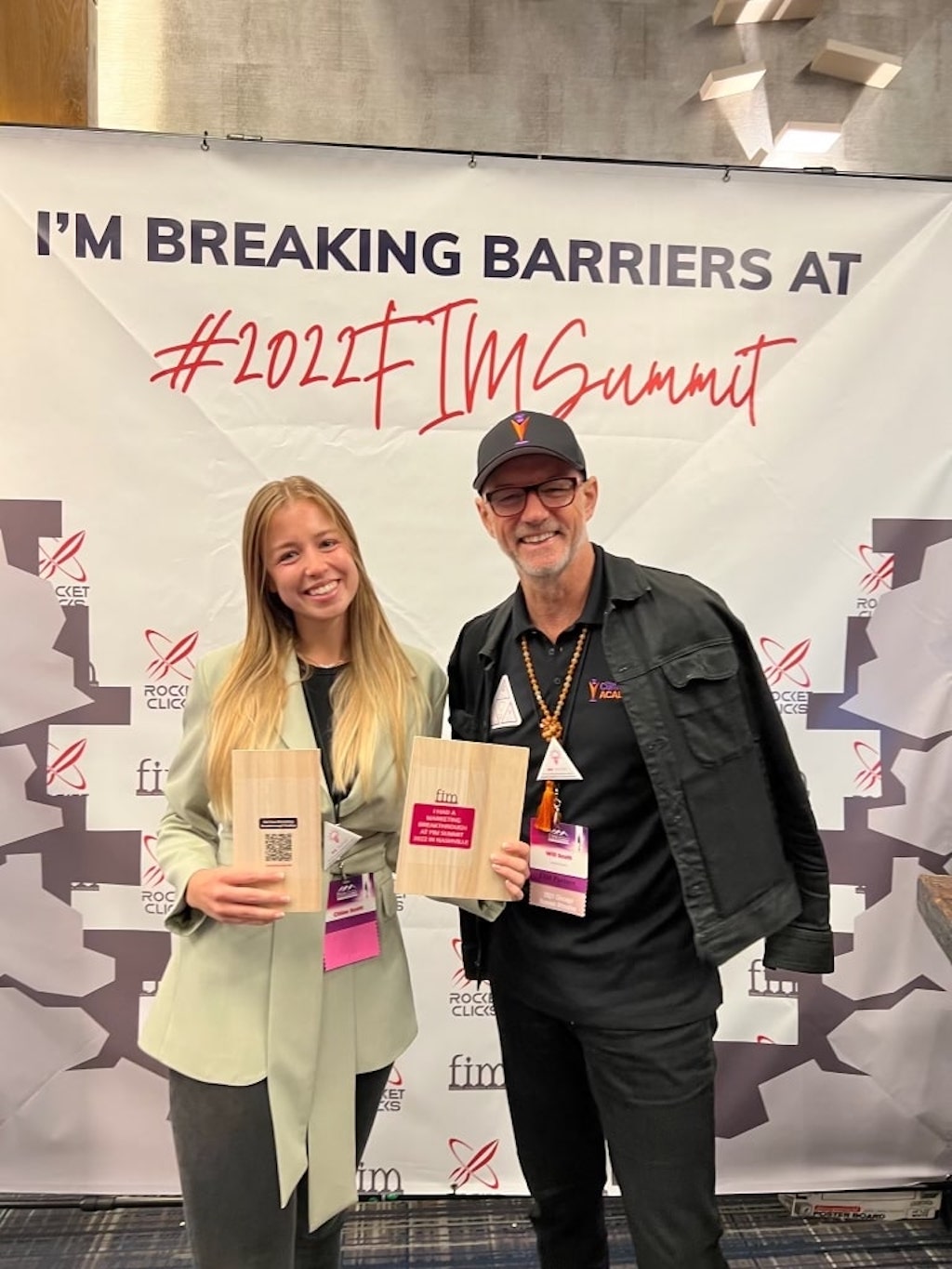Best Practices To Improve Workplace Culture

With so many resources available for leaders to begin their journey into implementing a thriving corporate culture, it's hard to know where to begin. That said, at The Culture Fix, we’ve done the research, produced the case studies and (literally) wrote the book on these proven techniques.
If you’re still considering dipping your toes into the world of valued culture, this is the perfect place to start. We’ve compiled the top 8 practices to implement to achieve this in your workplace.

Take the time to truly see your team
Will Scott, founder of The Culture Fix Academy, and author of The Culture Fix, grew up in Zambia, which led him to have a great connection to the continent of Africa. So when he learned about the Zulu greeting, "Sawubona," there was an immediate connection for him. Commonly used in South Africa, and not just among the Zulu people, Sawubona is generally used as a greeting, literally translating to, “I see you.”
Think about what it means to greet someone in this way. When you truly see someone, and give full acknowledgment of their presence, you open up yourself. And by doing so, you receive a wholehearted recognition of the full person in front of you and what he or she brings to the world.
It’s very different from the usual "hi" that we mutter when passing our colleagues in the office. Sawubona suggests a moment of actual connection, something that these typical greetings tend to lack. Even beyond a simple greeting, how often do we genuinely see each other in the workplace?
To realize the culture we wish to manifest, it helps to take a page from the Zulu playbook and take the time to fully acknowledge the people we work alongside each day. It’s a small thing that can make a big difference in elevating company culture.
A greeting can be a chance to create a meaningful connection, if we use it that way. As a leader, when you see an employee who you haven’t seen in a while, take 60 seconds to offer them more than a quick “hello.” Make eye contact and take the time to be fully present.
Scott actually lingers with his handshake, often holding on a second longer and sometimes clasping their hand with his other hand as well. He thinks this helps being present, and shows them that he wants to see them and know them. Of course this slow, deliberate handshake will also help this individual notice your intention.
Next, ask a question about something that you have genuine curiosity about, like their kids or a shared interest. Will’s favorite is, “What are you working on?” But it’s not really about the question. The important thing is to stay focused and listen, to really hear the answer without getting distracted. Show that you’ve heard them by acknowledging their response and showing them that they’ve been heard.
This can all take place in a few seconds. It costs nothing and can have a huge impact on someone’s day. Apart from the individual effect, it goes a long way to creating a solid foundation for a great culture. As a leader, you’ll feel more in touch with your employees. Connection benefits everyone.
One common response to the "Sawubona" greeting is, "Yebo, sawubona." This response means, “I see you seeing me.” Think about how good it feels to see someone’s eyes light up when they feel acknowledged. These kinds of interactions leave people with the feeling that they’re working at the right place, and alongside people who care.

Determine your ‘why’ with a core purpose
One of the biggest factors in establishing a valued culture in your organization is establishing a Core Purpose™, which highlights your overarching company goal and reason for being. Why is this so important? Take it from a study published by the Gallup Organization, which analyzed more than 98% of the world’s population and identified the 5 common elements people (including your employees) need to thrive in their lives:
By establishing a why, your workers will finally be able to identify their purpose, be empowered to pursue it and ultimately get better at what they do. If your organization has been functioning without this and it seems like a big undertaking, it’s not! What’s more, the outcome of establishing a CorePurpose not only affects those currently within your business, but those who you attract in the future. A recent Mercer Study also found purpose to be a game changing factor in creating a successful & efficient workforce, with employees 3x more likely to work for a company with a strong sense or purpose.
Once you are able to spell out your CorePurpose™, your employees are sure to have a newfound reason to believe in what they are doing, and love why they work. We are humans with feelings, a fact often ignored by organizations in pursuit of more corporate goals. But ultimately all that matters is the way we feel. And if we feel good in our work, with our teams and about our organization, all efforts become aligned and extraordinary results are achieved. Could you ask for anything better?

Establish CoreVals for long-term success (Display your values graphically)
One of the most overarching themes of The Culture Fix is creating and giving life to your values, which we refer to as CoreVals™. It all begins with the creation of CoreVals. We were able to distill this hugely important step into three parts. The first is to use words that are meaningful. A statement that provides purpose and meaning will help everyone feel this way about their work because they will all understand why it matters. Next, tie your CoreVals to company folklore. By sharing your organization’s philosophies and the stories that make up its history, your team will continue to remember and increasingly relate to your CoreVals. Finally, use descriptive language. Words like proud and passionate are great, but a solid set of CoreVals needs to explain what is meant by those words with actionable, descriptive terms.
If you think putting pen to paper is enough for your CoreVals, you’re wrong! If your values are simply printed on an onboarding document or in a long forgotten word document lost on your desktop, the chances are they aren’t being embraced. That’s why once your organization settles on a concise, action-driven set of CoreVals, it is important to really bring them alive through creative assets! Creating print displays for your core values and their descriptors is a must. Unless CoreVal words are highlighted in some graphic way and hung on the wall, they really don’t exist and aren’t part of the culture. Keeping CoreVals hidden suggests the company is not proud enough or serious enough about them. So get creative! It doesn’t have to stop at images & icons, either. Really think about what will stick with your stakeholders, from creative characters to a complimentary theme song and beyond.
Have fun with this part of the process. It may feel particularly satisfying because it uses both sides of your brain or because it connects the people inside your organization to the larger world. Remember, you are leading a culture that extends beyond the four walls of the company!

Introduce recognition and reward systems
Acknowledging the work of your fellow stakeholders is part of good business management. Utilizing your established CoreVals™ to drive these recognitions is not only one more way to bring them front and center, but to show your team how integral they are to daily operations. If you show your gratitude for demonstrating a value that defines your group, based on company history that everyone knows, you’ve got context. You’ve got Aha! moments. You are also tapping emotions, making people feel connected and, of course, having fun.
How will you create a means of recognition that ties your values to the company image? Delve deep for ideas from the stories that generated your work establishing CoreVals, as well as those your work generated. What do people like or think is unique about your organization? When you know what is already memorable, you can capitalize on that.
The Culture Fix encourages the use of a Notice and Nominate scheme, a recognition tied directly to your CoreVals™. Whether it’s weekly or monthly, your stakeholders are encouraged to nominate their peers when they ‘catch them committing a CoreVal’. This concept brings those values front and center, and shows how integral they are to daily operations. If you show your gratitude for demonstrating a value that defines your group, based on company history that everyone knows, you’ve got context. You are also tapping emotions, making people feel connected and, of course, having fun.
We’re not just talking about a free coffee mug. We’re talking about something that people really want and will appreciate. One way to do this is to ask your team what their interests are and what would make them feel special. Show that you’ve made an effort to make the prize personal to the individual. Before you know it, you’ve got people doing their best to be next in line for that same recognition.

Use values to hire (and unhire!)
To build, rebuild or maintain your company’s culture, you must make a priority to put culture above all else. It’s hard not to get caught up in internal issues, recurring problems, and glitches in what you thought were proven strategies. By focusing on culture, you eliminate ineffective patterns, set a more positive course, and then that course perpetuates all on its own. That’s the beauty of leading a culture instead of just leading a company. With a little preventive care and maintenance, healthy cultures run autonomously, leaving you free to focus more on growth and the big picture.
While these practices are especially effective as you grow and add people to your roster, it is also important to have a process to remove- or unhire- employees who drag your culture down. I like to use the word unhire because it is less demeaning than the popular term “firing” that is thrown around so casually in business. Unhiring suggests a more mutually agreed act and one where the employer or hiring manager is accepting some responsibility for a hiring mistake.
By following these processes. you are given the opportunity to acknowledge superior work without bias and relieve yourself from having to make judgment calls on a case-by-case basis, a method that will ultimately drain your resolve. Not wanting to enter yet another difficult conversation, you might avoid or delay unhiring an unsatisfactory employee. Letting the wrong person stay only helps that one person - and you may not even be doing them a service. Meanwhile, you harm many people, as well as your business image and prospects. The truth is, you are only as good as your worst employee.

Identify your culture champions
Even the most dynamic leader can’t propagate culture alone! These “champions” of culture will help you bring every team member on board and monitor the company’s cultural health. Your champions may include upper management colleagues, department heads, HR gurus or any employees who display passion for cultural direction.
As you begin to share your mission through inter-company communications, pay close attention to the responses. When you see the light come into someone’s eyes or you receive effusive, enthusiastic emails supporting your quest, you’ll know you’ve found a czar. You’ll take your strongest champions as your confidantes as you deliberately discern your CoreVal priorities and the language that best expresses them. During this discovery process, your Culture Champions will often self-identify by volunteering or showing the most exuberance. Embrace their contributions so that all levels of the company are represented and not simply the leadership.
Great Culture Champions embody your CoreVals internally and externally, taking every opportunity to discuss them, sharing stories about the company culture on every public stage — at company-wide meetings, at speeches outside the organization, even during engagements with partners. Your Culture Champions will tell stories to ensure they become a part of company folklore. They’re proud of the culture they have worked hard to cultivate and they help make it thrive by sharing current examples of how the culture positively shapes their workplace.

Set your team up for success with CoreWorkflows
Most companies already have some form of established procedures to lend consistency to the way work flows through the business, probably even several of these processes for the different streams of activities within your enterprise. This practice also applies to culture-supporting activities. Why? Because great people on a great team, working within an efficient, documented and well-planned business process, are the keys to productivity. In The Culture Fix, we call this the CoreWorkflow—the overarching company workflow or master process.
It can be quick and easy for you and your team to devise your CoreWorkflow and merge it with your CoreVals. If you already have documented processes for each of the work streams in the business, this will knit them all together at a high level. Once you have written out the key steps, using carefully chosen, all-encompassing words, group and organize them in a logical sequence, always bearing in mind your core values. Your goal is to integrate your core values and CoreWorkflow into a statement that is uniquely yours.
Every business succeeds through disciplined action. Winging it cannot be sustained. Following standard procedures that tie into core values is an easy way to instill discipline and accountability in your staff. Once you have devised the protocols, you’ll want to assess if they are working as planned. Creating protocols and a numeric rating system will allow you to hire and unhire, monitor workflows, and evaluate employees consistently and objectively.

Maintain your success with Core People Processes
Once your Core Purpose and Core Values are determined and represented throughout your organization, it is important to implement Core People Processes to maintain this success. We’ve already talked about using your values to hire and unhire, but it is equally important to schedule consistent check-ins with your team to ensure the presence of these values month to month, year to year. There are many evaluating protocols that you can use to measure the quality and quantity of the benefits that come from your culture quest. These can include (but aren’t limited to):
- Goal achievement reports
- Financial reports
- Employee evaluations
- Quarterly and annual surveys
- Consultant interviews
- Spontaneous testing
- Gut checks
- …and more!
It's simple. By continuing to talk about your organization’s core values in every aspect of your business, from surveys to notice and nominate schemes, your company culture will not only be alive, but it will truly thrive.
Where does your organization sit?
If you are curious about where your organization sits when it comes to having a valued culture, we have a tool for you! Request access to our Culture Check-up survey, and we’ll send you a 5-minute Culture Check-up to get a pulse on the culture in your organization. This will help you understand how strong your workplace culture is and what you can do to take it to the next level.


